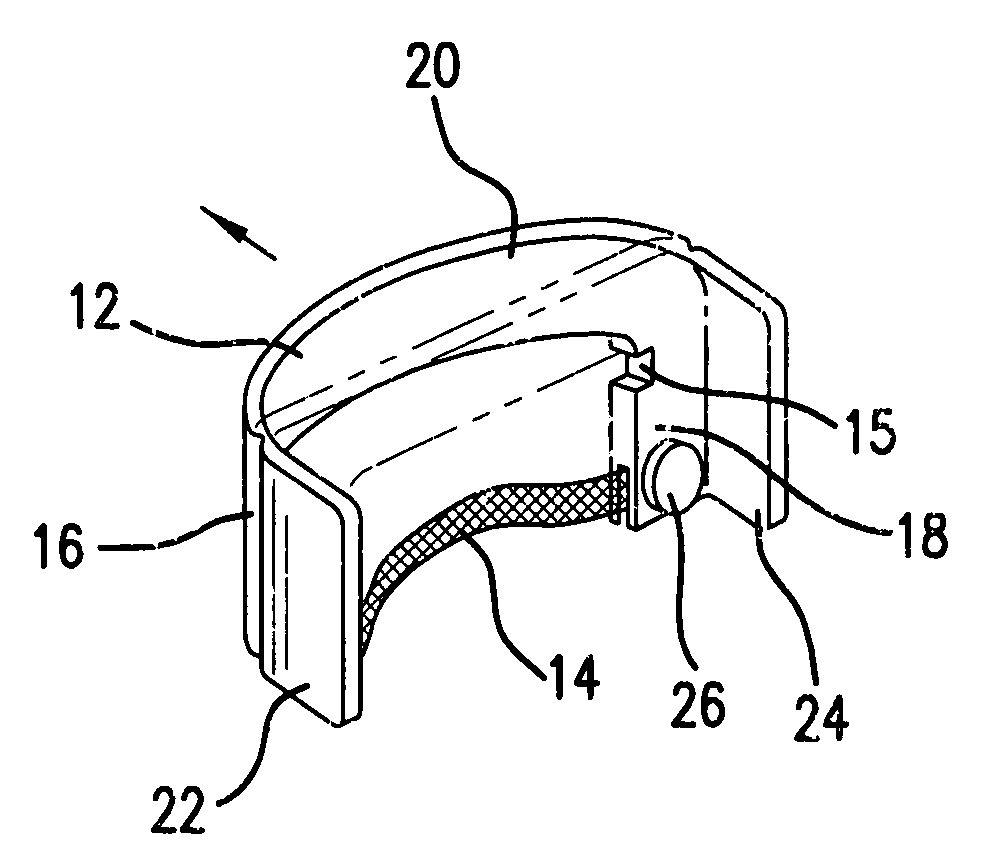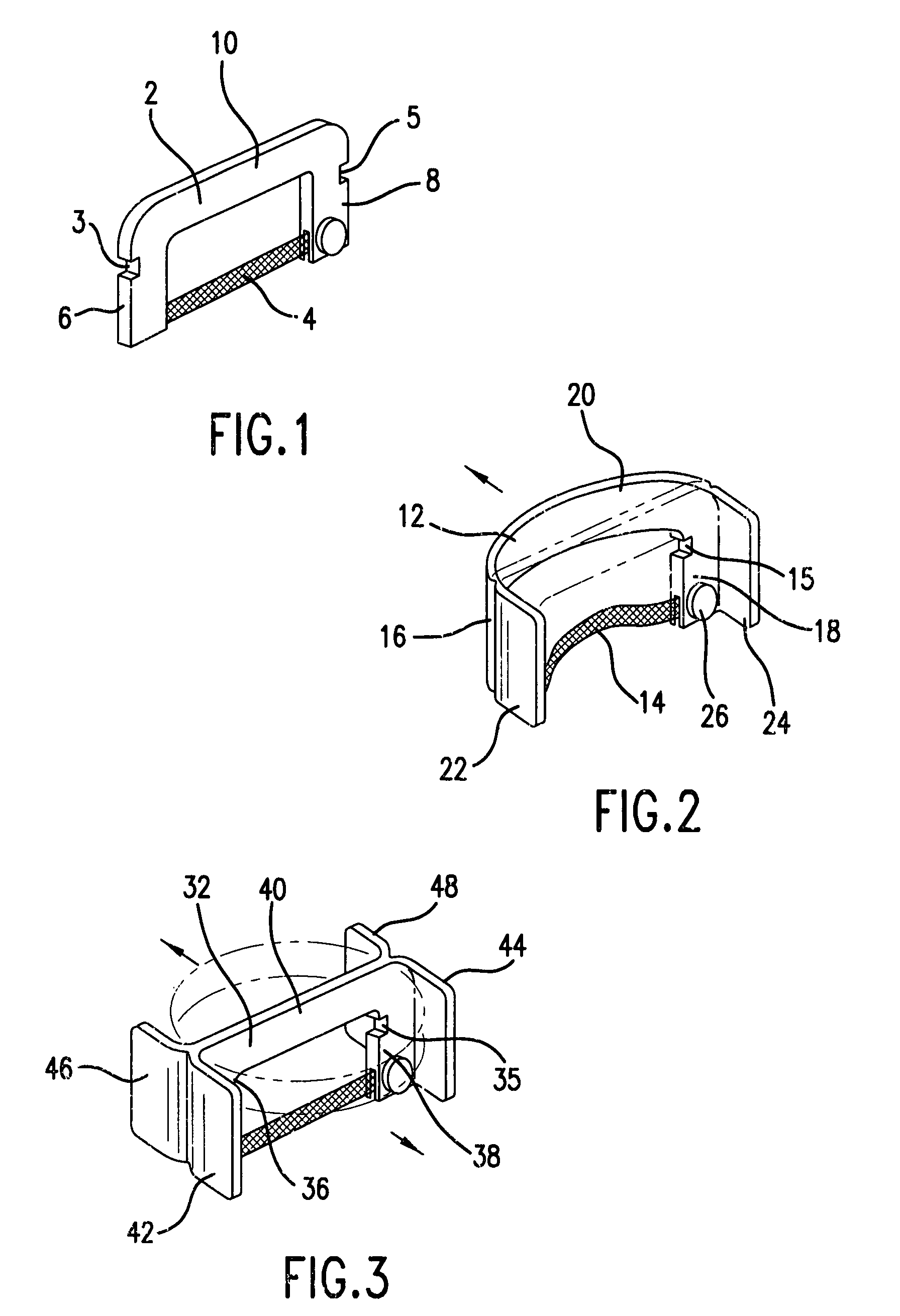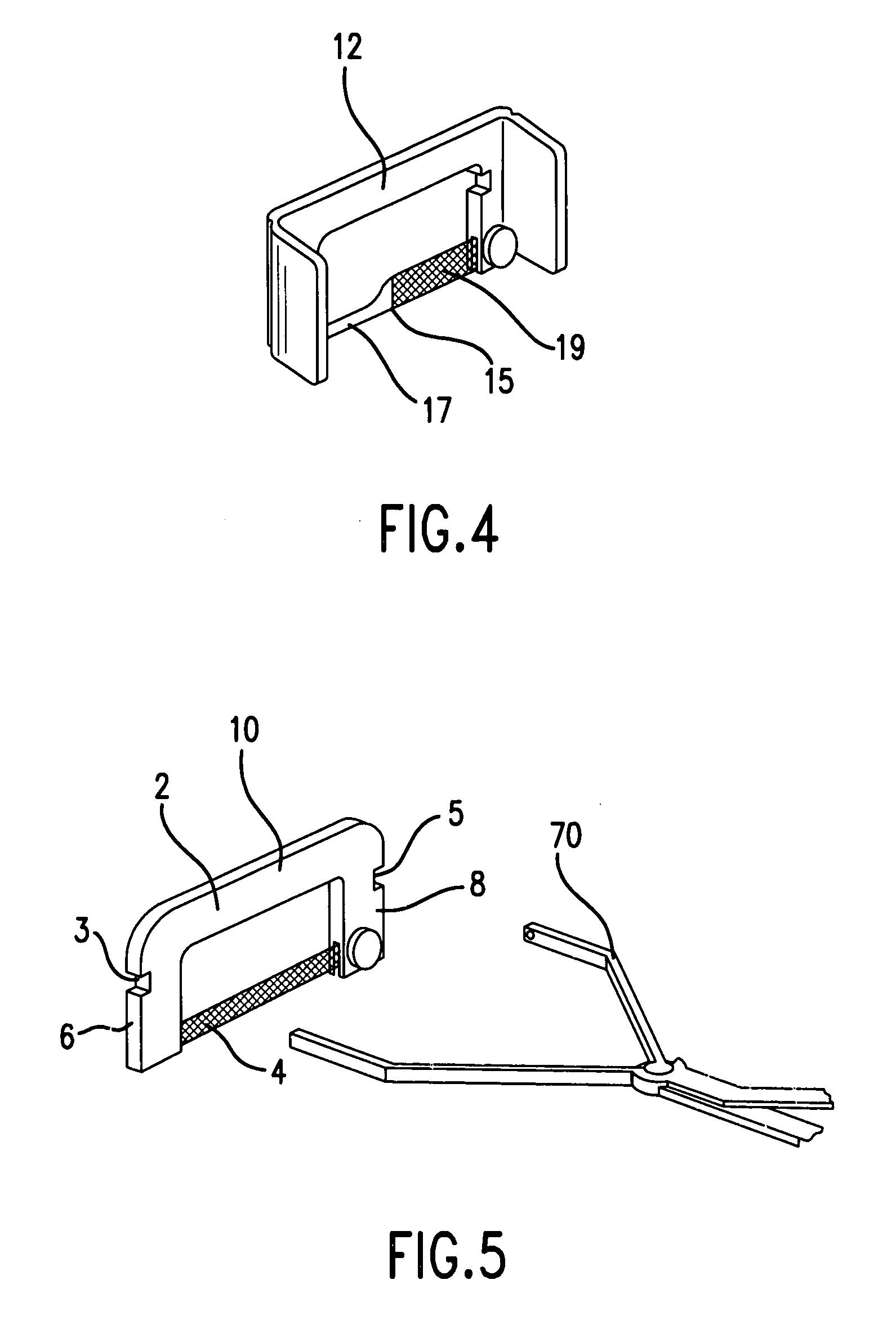Interproximal devices and methods of using same
a technology of interproximal surfaces and strips, applied in the field of dental devices and methods, can solve the problems of periodontal health, rough ledges or “overhangs”, and the polishing of the interproximal surface of a restoration is a particular challenge, and achieves the effect of facilitating quick and easy interchange of strips and increasing the angle of attack
- Summary
- Abstract
- Description
- Claims
- Application Information
AI Technical Summary
Benefits of technology
Problems solved by technology
Method used
Image
Examples
Embodiment Construction
[0031]In one embodiment, the apparatus of the present invention comprises a manually flexible semi-annular and oblong bow 2. FIG. 1. The bow may be formed of plastic, metal or other materials that are deformable under manual pressure to loosen the strip as described herein, yet have memory to return to the original shape when pressure is released. A strip 4 is mounted / suspended under tension between the ends of the generally vertical legs 6,8 of the bow to form an annular loop. A center member 10 connects the generally vertical legs, and is opposite the strip. As shown, the center member is generally parallel to the strip.
[0032]In another embodiment, wings for holding and deforming the bow extend from the legs. FIG. 2. A semi-annular bow 12 having a center member 20 connects a generally vertical leg 16 on a proximal end of the bow with a generally vertical leg 18 on a distal end of the bow. The bow has tabs or wings 22,24 extending outwardly from the legs. The bow is capable of defo...
PUM
 Login to View More
Login to View More Abstract
Description
Claims
Application Information
 Login to View More
Login to View More - R&D
- Intellectual Property
- Life Sciences
- Materials
- Tech Scout
- Unparalleled Data Quality
- Higher Quality Content
- 60% Fewer Hallucinations
Browse by: Latest US Patents, China's latest patents, Technical Efficacy Thesaurus, Application Domain, Technology Topic, Popular Technical Reports.
© 2025 PatSnap. All rights reserved.Legal|Privacy policy|Modern Slavery Act Transparency Statement|Sitemap|About US| Contact US: help@patsnap.com



